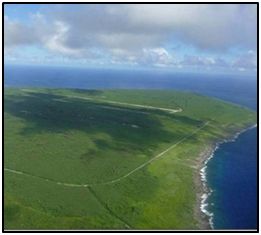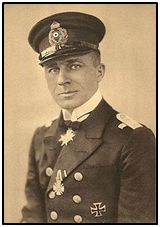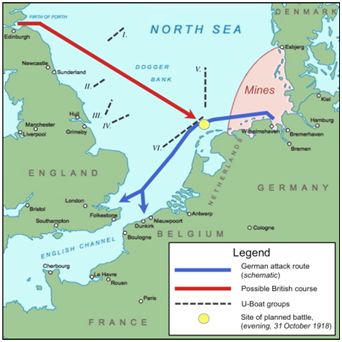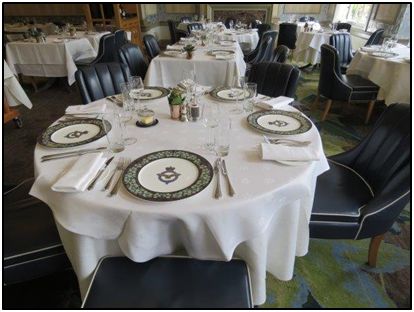


Newsletter/Nuusbrief 169
October/Oktober 2018
The September meeting took place on the 10th at the usual venue in Port Elizabeth.
The members’ slot was utilised by Dennis Hibberd who introduced, and showed, the original film footage of the surrender ceremony of the Imperial Japanese forces on the battleship USS Missouri in Tokyo Bay on 2nd September, 1945.It may be viewed at:
https://www.youtube.com/embed/vcnH_kF1zXc
The curtain raiser by Malcolm Kinghorn was on The 36 South Africans killed in Iraq between January 2004 and June 2012 while employed as private contractors with the United Nations Assistance Mission for Iraq. The most common causes of death were roadside improvised explosive devices (10), followed by convoy ambushes, suicide bomb victims, and kidnapped assumed killed, (4 each). Malcolm raised the point as to whether private contractors employed on United Nations missions are mercenaries in the traditional sense of the term. This led to a lively discussion on the concept of mercenaries, which expanded to cover whether foreign nationals serving in other countries’ armed forces, for example South Africans in the British Forces, are mercenaries. Malcolm’s conclusion was that the definition of a mercenary as ‘a professional soldier hired to serve in a foreign army’ is insufficient to cover the complexities of multi-national peace support operations.
The main lecture, titled The history and work of the SAPS Air Wing, was presented by Captain Jacques Camons of the South African Police Services. After a brief history of the formation of the wing, Jacques gave an illustrated account of the types of aircraft (both fixed wing and helicopters) used by the Wing as well as an outline of their technical capabilities and limitations. He then described the various roles, current operations and uses of the different aircraft. These ranged from apprehending criminals to mountain rescue.
Future meetings and field trips/ Toekomstige byeenkoms en uitstappe
The next regular meeting will be on Monday 8th October at 19h30 at the Eastern Cape Veteran Cape Car Club in Conyngham Road, Port Elizabeth. The curtain raiser will be by JacoPretorius on KommandantFouchée [of the ABW]and the main lecture, by Stephen Bowker, on Manfred von Richthoven [The Red Baron].
Matters of general interest / Sake van algemene belang
Members’ forum/Lede se forum
Jonathan Ossher has submitted an illustrated article on the historic significance of Tinian Island, a small green dot in the vastness of Pacific Ocean. This is a short summary:
Tinian Island was the site from which the two atomic bombs were flown to Japan in August 1945. Occupied and defended by the Imperial Japanese Army, it was captured by US Forces in July 1944 and was, within months, developed into a base from which B-29 Superfortress bombers could launch bombing attacks on the Japanese mainland.

Runway Able from the air
On August 6th the B-29 bomber Enola Gay took off from Runway Able carrying the bomb known as Little Boy. Six hours later at 08h15, Japan time, the first atomic bomb was dropped on Hiroshima. Three days later, in the pre-dawn hours of August 9th a B-29 named Bockscar took off from the same runway carrying the bomb dubbed Fat Man. Finding its primary target, the city of Kokura, obscured by clouds, it proceeded to the secondary target of Nagasaki where the bomb was released at 11h01.

Atomic Bomb Pit #1 where Little Boy was loaded onto Enola Gay
The dropping of these two bombs resulted in Japan’s surrender, saving countless thousands of American and Japanese lives had the war continued, with the Japanese willing to fight to the death and contest every inch of ground as was their military tradition.
Further information and illustrations are available at:
https://www.google.com/search?q=Tinian+Island&ie=utf-8&oe=utf-8&client=firefox-b-ab and
https://www.google.com/search?q=Tinian+Island&client=firefox-b-ab&source=lnms&tbm=isch&sa=X&ved=0ahUKEwiC7JTGteLdAhWcHsAKHc9bBdQQ_AUIDigB&biw=1536&bih=722
Parades
The Square Hill Memorial Service took place at Aloe White Ensign MOTH Shellhole on Sunday 23rd September. See Newsletter 168 for a short account of this important battle, memorable amongst other reasons, for the number of gallantry awards received by the Cape Corps.
On Sunday 16th September a service was held at St Pauls Anglican Church, Port Elizabeth, to commemorate the 100th Anniversary of the forming of the RAF as well as the 75th Anniversaryof the DambustersRaid and the 70th Anniversary of the Berlin Airlift.
World War I Centenary Years /
Eerste Wêreldoorlog Eeufeesjare
Major engagements in October 1918
On land, October was a disastrous month for the Central Powers.
On the Western Front, after the breaching of the Hindenberg Line between Cambrai and St Quentin atthe end of September and the beginning of October, the German army began to collapse due to irreversible troop losses, exhaustion, food shortages, illness and hence declining battle readiness. To add to theirweakening position, Bulgaria signed a separate peace treaty with the Allies on 29th September, becoming the first of the Central Powers to do so. On 4th October, Germany requested an armistice to which Wilson the American president responded with a list of demands, including withdrawal from all occupied territory and a total halt of U-boat attacks. By 5th October the last defensive positions on the Hindenberg Line had fallenand by 13th the German Army was in general retreat along a 100km front. The Germans also abandoned their positions along the Belgian coast, from which many of their U-boats operated.
On the Mesopotamian Front, Damascus was captured by the Australians and Arabs on 1st October and following the Battle of Sharqat north of Baghdad from 23rd to 30th the Mosul oilfields were captured. On 30th October Turkey signed an armistice with the Allies becoming the second of the Central Powers to do so.
On the Southern Front, the resurgent Italian Army with some British and French support gained a decisive victory against the Austro-Hungarians at the Battle of Vittorio Veneto fought from 23rd October to 4th November, at which point an armistice was signed bringing hostilities on this front to an end. The Italians lost some 38 000 men in this final battle,a figure dwarfed by Austro-Hungarian losses: 30 000 killed and 400 000 taken prisoner. This, together with internal political turmoil, resulted in the effective disintegration of the Austro-Hungarian Empire.
During this period a number of critical political developments had also taken place. The break-up of the six century’s old Austro-Hungarian Empire was heralded by a provisional government proclaiming the independent state of Yugoslavia on 6th October. On 7th October, Poland, formerly part of the Russian Empire, and now since the Treaty of Brest-Litovsk, under German hegemony, proclaimed itself an independent state. On 29th October, the Czechs declared their independence from Austria and two days later the Slovaks declared independence from Hungary. In Russia, what was to become a five-year civil war, in which several of the Allies became involved, and in which the Bolsheviks were ultimately victorious, was starting to get under way.
On matters naval a number of events took place during October.
Throughout 1918 Allied losses to U-boats had, due to the growing effectiveness of the convoy system, continued to fall while U-boat losses mounted. By autumn 1918, these had reached unacceptable levels, and with the war clearly being lost, the morale of their crews had deteriorated significantly. Amongst the measures taken by the Imperial German Navy was the withdrawal of their Pola U-boat Flotilla from the Mediterranean. This flotilla had been established to support Germany’s allies and, due to the favourable conditions for commerce raiding in the Mediterranean, caused a disproportionately large number of Allied losses. During the entire U-boat campaign 3.6 million tons of the 14 million tons lost by the Allies were sunk in the Mediterranean. Eight of the top dozen U-boat aces served in the Pola flotilla. Of the 45 U-boats which served in this Flotilla, 11 were lost operationally.
Nine of the U-boats sailed from their bases on the Adriatic to return to Germany and a further 10 boats were scuttled. Two ships — Mercia and Surada — were torpedoed on the way, being the last Allied ships to be sunk in the Mediterranean. Three of the U-boats were attacked en route of which one was destroyed. The last action of the Pola flotilla was on 9th November just two days before the Armistice: UB-50 torpedoed and sank the British battleship HMS Britannia off Cape Trafalgar. As an interesting aside, Oberleutnantzur See, Karl Dönitz who, as Admiral Dönitz commanded the German U-boats during the Second World War, was commander of UB-68 operating in the Mediterranean. On 4th October, his boat was, after experiencing technical difficulties, sunk by the Royal Navy and Dönitz became a prisoner of war, released only in 1920.
In an engagement known as The Action of 14th October 1918, one of the last U-boat battles of the war took place in the Atlantic Ocean between Portugal and the island of Madeira. U-139 under the command of Kapitänleutnant Lothar von Arnauld de la Perière, the unsurpassed top U-boat ace of both world wars, attacked the Portuguese civilian steamer São Miguel and its escorting Portuguese Navy naval trawler Augusto de Castilho, under the command of the First Lieutenant Carvalho Araújo. The trawler was equipped with two small Hotchkiss guns, one of 65mm on the bow and another of 47mm on the stern. U-139 was able to bring her two 15cm guns to bear. In the ensuing unequal and heroic engagement between the Augusto de Castilho and the U-139, the São Miguel managed to make good her escape at full speed, but the armed trawler was sunk with the loss of her captain and several of her crew.

Kapitänleutnant
Lothar von Arnauld de la Perière (1886-1941).
The Second Battle of Durazzo, also known as the Bombardment of Durazzo, was a naval engagement fought in the Adriatic Sea on 2nd October 1918. After the Macedonian Campaign which had led to the capitulation of Bulgaria at the end of September, the Allies were concerned that the retreating Austro-Hungarian army would fall back on the Albanian city of Durazzo for supplies. They therefore assembled a fleet of some 48 ships ranging from the Italian battleship Dante Alighieri, to cruisers, destroyers and torpedo boats with the objectiveof bombarding Durazzo and attacking any Austrian ships in the harbour.
Before the battle began, the Austro-Hungarian government withdrew most of their warships from Durazzo leaving only two destroyers, one torpedo boat and two U-boats to oppose the allied fleet. There were also three shore batteries which duelled with the allied ships until they were knocked out. The resulting naval bombardment destroyed much of the city including its historic heart near to the docks, as well as killing many civilians trapped in the city.
The most significant naval event of October 1918 was what is known as the Naval Order of 24th October 1918. It was a plan by the German Naval High Command to provoke a decisive battle between their ‘High Seas Fleet’ and the British ‘Grand Fleet’. When the order to prepare for the sortie was issued on 29th October, mutiny broke out aboard the German ships where the crews saw it as a pointless exercise. Despite the operation being cancelled, this in turn led to the more serious Kiel mutiny, which was the starting point of the German ‘November Revolution’, which in turn led to the dissolution of the Empire, Germany’s negotiating weakness at Versailles, and the proclamation of the Weimar Republic.

Naval Order of 24th October 1918:
The plan to force a naval clash on the high seas.
Source: https://en.wikipedia.org/wiki/Kiel_mutiny
Further to the earlier points on Allied conditions for an armistice, was that Germany was required to surrender all her submarines. In consequence on 24th October all German U-boats were ordered to cease offensive operations and return to their home ports. The Allies stipulated that all seaworthy submarines were to be surrendered to them and those in shipyards be broken up. The last significant role played by U-boats in World War I was the suppression of the naval mutiny that same month, when they were ordered to stand ready to ‘fire without warning on any vessel flying the red flag’.
Websites of interest/Webwerwe van belang
Historic aircraft
'Lost squadron' WWII warplane discovered deep beneath a Greenland glacier
Tom Metcalfe Live Science 25th August 2018
https://www.livescience.com/63423-lost-squadron-unearthed-greenland-glacier.html?utm_source=oap-newsletter&utm_medium=email&utm_campaign=20180828-oap
World War I
A forgotten soldier on a forgotten front
Allan Little BBC News 29th September 2018
https://www.bbc.co.uk/news/resources/idt-sh/A_forgotten_soldier
World War II
World War II bombs 'felt in space'
Laura Foster BBC Science News 26th September 2018
https://www.bbc.co.uk/news/science-environment-45655149
Josef Frantisek: The Battle of Britain's Czech hero
Chris Bowlby BBC News 15th September 2018
https://www.bbc.co.uk/news/stories-45516556
Two personal accounts of the Second World War
# 1 Chinese boy soldier during the Japanese invasion:
https://www.bbc.co.uk/news/av/stories-45644434/occupied-china-during-ww2
# 2 A Dutch citizen at Arnhem:
https://www.bbc.co.uk/news/av/stories-45563335/the-daring-allied-plan-to-defeat-the-nazis
German town evacuated over WW2 bomb
BBC News 26th August 2018
https://www.bbc.co.uk/news/world-europe-45316144
British POWs sank with the Lisbon Maru - should it be raised?
Anon BBC News 14th July 2018
https://www.bbc.co.uk/news/stories-44814053
Cold War and post-Cold war
Lt Col Stanislav Petrov ‘the man who single-handedly saved the world from nuclear war’
Dylan Matthews Vox 26th September 2018
https://www.vox.com/2018/9/26/17905796/nuclear-war-1983-stanislav-petrov-soviet-union
The women code breakers who unmasked Soviet spies
Liza Mundy Smithsonian Magazine September 2018
https://www.smithsonianmag.com/history/women-code-breakers-unmasked-soviet-spies-180970034/
How the CIA found a Soviet sub — without the Soviets knowing
Greg Myre Parallels 18th September 2017
http://www.npr.org/sections/parallels/2017/09/18/549535352/how-the-cia-found-a-soviet-sub-without-the-soviets-knowing
China just showed it has a new 'Dark Sword' fighter jet — and it's a nightmare for the US
Alex Lockie Business Insider 5th June 2018
https://www.businessinsider.com/chinas-dark-sword-fighter-jet-is-a-nightmare-for-the-us-military-2018-6?IR=T
A voice from the past
Hero's warning: Battle of Britain mastermind, Sir Hugh Dowding, said EU was a ‘terrible menace’ in letter written 12 years before UK joined
Hugo Gye The Sun 3rd September 2018
https://www.thesun.co.uk/news/7167204/battle-of-britain-mastermind-said-eu-was-a-terrible-menace-in-letter-written-12-ye
Members are invited to send in to the scribes, short reviews of, or comments on, books, DVDs or any other interesting resources they have come across, as well as news on individual member’s activities.
In this Newsletter, there have been contributions by Malcolm Kinghorn, Barry Irwin, Michael Irwin, Peter Duffel-Canham, Richard Tomlinson, Yoland Irwin and Jonathan Ossher.
| Chairman: | Malcolm Kinghorn | culturev@lantic.net |
| Secretary: | Franco Cilliers | Cilliers.franco@gmail.com |
| Scribes: | Anne and Pat Irwin | p.irwin@ru.ac.za |
TAILPIECE:
The RAF Club in London

RAF Club dining table
Source:https://puppy1952.wordpress.com/2018/08/08/mother-and-daughter-do-london-and-europe-day-2/